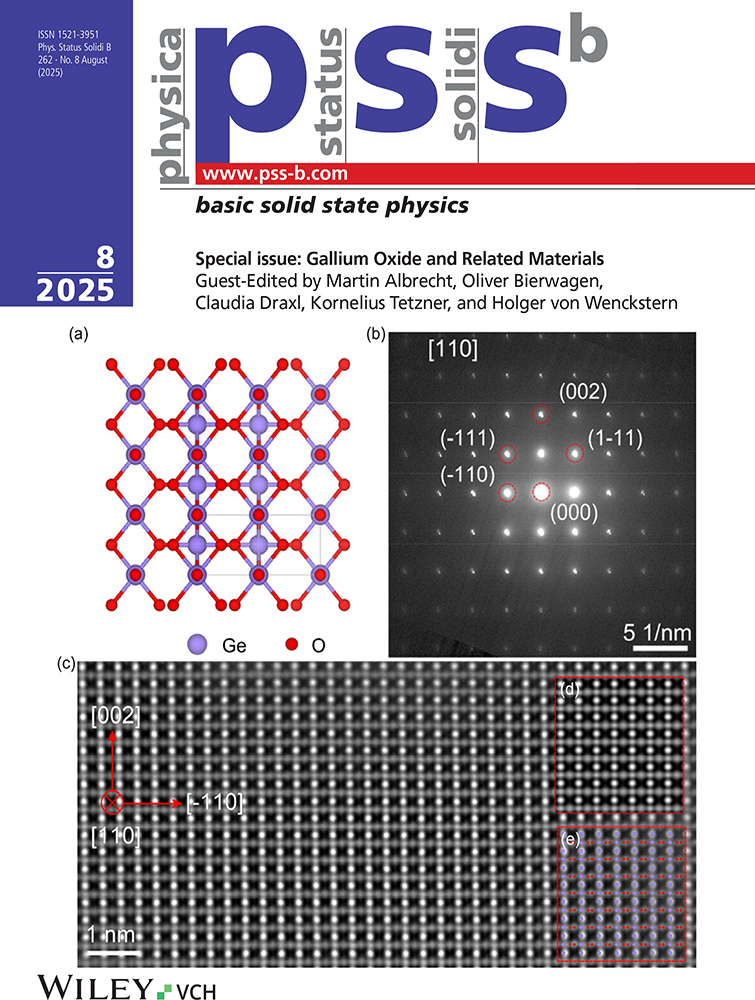Dielectric properties of monoclinic KD2P04
Abstract
enHighly deuterated KD2PO4 which is monoclinic at room temperature, undergoes a dielectric phase transition between T = 0 °C (on heating) and Tcll = −25 °C (on cooling). At lower temperatures there is another dielectric anomaly around TcI = −60 °0. The “lower” transition Tci occurs approximately at the same temperature as the tetragonal- orthorhombic ferroelectric phase transition, whereas the “higher” transition TCII is similar in character to the tetragonal-monoclinic “high temperature” transition in “normal” KH2PO4. A tentative model for the phase diagram of KH2PO4 and the tetragonal-mono-clinic transition is discussed.
= 0 °C (on heating) and Tcll = −25 °C (on cooling). At lower temperatures there is another dielectric anomaly around TcI = −60 °0. The “lower” transition Tci occurs approximately at the same temperature as the tetragonal- orthorhombic ferroelectric phase transition, whereas the “higher” transition TCII is similar in character to the tetragonal-monoclinic “high temperature” transition in “normal” KH2PO4. A tentative model for the phase diagram of KH2PO4 and the tetragonal-mono-clinic transition is discussed.
Abstract
deStark deuteriertes KD2P04, das bei Zimmertemperatur monoklin ist, zeigt einen dielek-trischen Phasenübergang zwischen T = 0 °C (nach Aufheizung) und T
= 0 °C (nach Aufheizung) und T = −25 °C (nach Abkühlung). Bei tieferen Temperaturen tritt eine andere dielektrische Anomalie um TCI = −60 °C auf. Der „tiefere”︁ Übergang TCI tritt etwa bei derselben Temperatur auf wie der Übergang: tetragonale-ferroelektrische rhombische Phase, während der „höhere”︁ Übergang TII im Charakter dem „Hochtemperatur”︁-Übergang: tetragonale–monokline Phase in „normalem”︁ KH2PO4 ähnlich ist. Es wird ein Modell für das Phasendiagramm von KH2PO4 und fur den Phasenübergang: tetragonal-monoklin diskutiert.
= −25 °C (nach Abkühlung). Bei tieferen Temperaturen tritt eine andere dielektrische Anomalie um TCI = −60 °C auf. Der „tiefere”︁ Übergang TCI tritt etwa bei derselben Temperatur auf wie der Übergang: tetragonale-ferroelektrische rhombische Phase, während der „höhere”︁ Übergang TII im Charakter dem „Hochtemperatur”︁-Übergang: tetragonale–monokline Phase in „normalem”︁ KH2PO4 ähnlich ist. Es wird ein Modell für das Phasendiagramm von KH2PO4 und fur den Phasenübergang: tetragonal-monoklin diskutiert.




